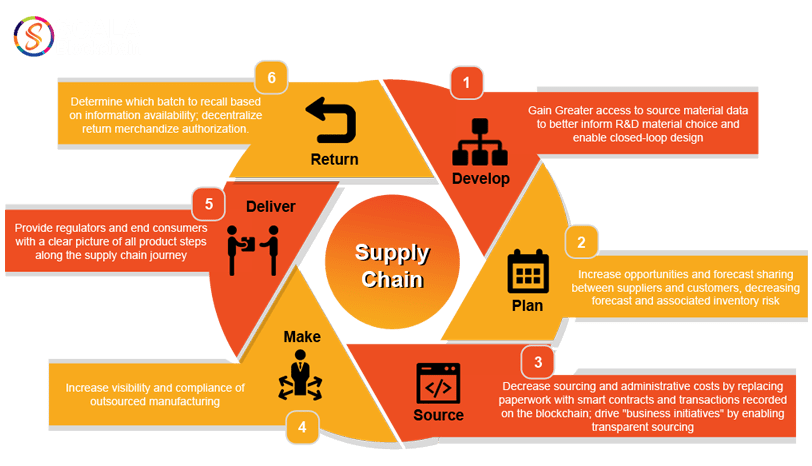Blockchain
Blockchain for supply chain management
Supply chain was a huge step forward in the way businesses reach their customers or consumers. It eased the hassles in way businesses worked. It would greatly improve the visibility and control over goods or products as they are moved from point A to point B. This was sufficient for a time when businesses were not so complicated as today. Supply chain is going through a lot of transitions to keep up with the ever changing market environment. New innovations and technologies are adapted and integrated to fulfill the supplier and customer needs. As a result of that Supply chain has become more opaque, error prone and is extremely difficult to manage. This is where expert look forward to blockchain, as it can ease some aspects.
Supply chain activities maximize customer value and achieve a sustainable competitive advantage. Representing a conscious effort by the supply chain firms to develop and deploy supply chains in an efficient and effective way possible. Activities in supply chain cover everything from sourcing, product development, production, and logistics, as well as the info systems needed to control and coordinate these activities.
 There two core concepts in supply chain
There two core concepts in supply chain
- Practically every product that reaches an end user represents the cumulative effort of multiple organizations. These organizations are referred to collectively as the supply chain.
- While supply chains have existed for a long time, most organizations have only paid attention to what was happening within their “four walls.” Few businesses understood, much less managed, the entire chain of activities that ultimately delivered products to the final customer. The result was disjointed and often ineffective supply chains.
Organizations that make up supply chain are “linked” together through physical flow and information flow.
Physical Flow
Physical flows involve the movement, transformation and storage of materials and goods. They are physical and visible pieces of a supply chain. But information flows are just as important as these.
Information Flow
Information flow allows the numerous supply chain partners to coordinate their long-term plans, and to control the daily flow of materials and goods through the supply chain.
Blockchain in Supply chain- What’s new?
Blockchain being a distributed ledger makes absolutely sure of the security and transparency; it promises to resolve the existing problems in supply chain today.
By implementing the blockchain methods and solutions, supply chain inherits the following attributes of blockchain and evolves for the better
- Transparency:All parties involved can visualize the transactions recorded on a blockchain from the time it was created.
- Decentralization:Blockchain operates on a network and therefore not controlled by a single entity.
- Security:Transactions carried out on blockchain are encrypted, thus making it impossible to forge data.
What we offer
We at Scala Blockchain strive to innovate and provide global systems to mediate trust and selective transparency. Many of the leading tech providers are looking to build a supply chain management that underlies the blockchain technology so that it could inherit the properties of it and make it better for business and customers alike. With the level of transparency expected from both parties the margin for any intermediary error is highly unlikely.
So in a nutshell,
- Registering the transfer of goods on a ledger
- Identify the parties involved in transaction
- Identify the price, location, date, quantity
- Store the quality control check information
- Save relevant info in managing supply chain
- Public ledge, transparency to intermediaries
- Makes it possible to track the product to origin
- Decentralization means distributed ledger ownership
- Manipulation of data is impossible; it’s immutable
